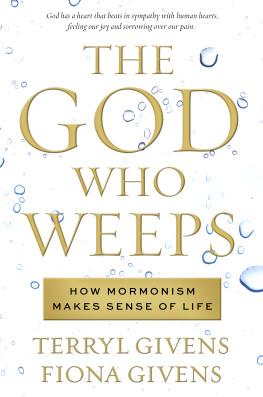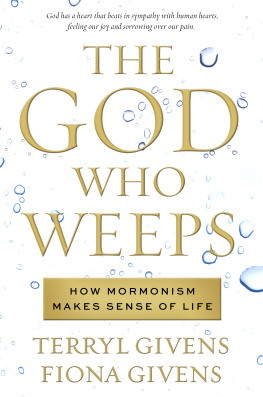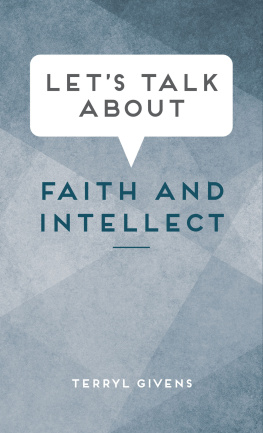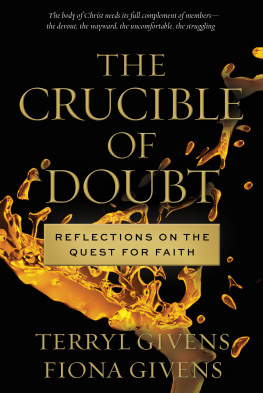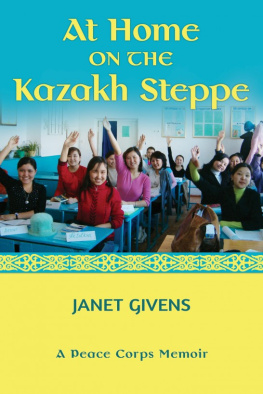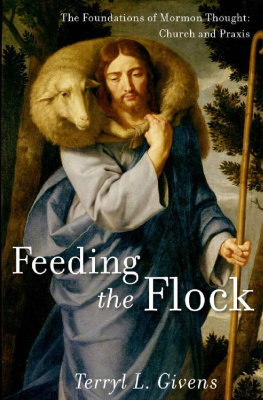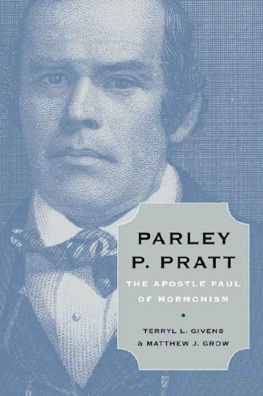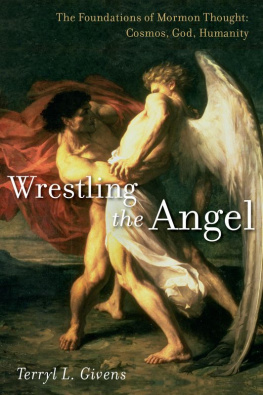Columbia University Press
Publishers Since 1893
New York Chichester, West Sussex
cup.columbia.edu
Copyright 2014 Columbia University Press
All rights reserved
E-ISBN 978-0-231-52060-7
Library of Congress Cataloging-in-Publication Data
The Columbia sourcebook of Mormons in the United States / edited by Terryl L. Givens and Reid L. Neilson.
pages cm
Includes bibliographical references and index.
ISBN 978-0-231-14942-6 (cloth : alk. paper) ISBN 978-0-231-52060-7 (ebook)
1. Church of Jesus Christ of Latter-Day SaintsHistorySources. 2. Mormon ChurchHistorySources. 3. MormonsCorrespondence. 4. American prose literatureMormon authors. I. Givens, Terryl, editor of compilation.
BX8611.C63 2014
289.373dc23
2014000714
A Columbia University Press E-book.
CUP would be pleased to hear about your reading experience with this e-book at .
Jacket Design: Michelle Taormina
Jacket Image: iStockphoto/ jhack
References to Internet Web sites (URLs) were accurate at the time of writing. Neither the author nor Columbia University Press is responsible for URLs that may have expired or changed since the manuscript was prepared.
To Marlin K. Jensen
A MONOGRAPH HAS THE ADVANTAGE of not pretending to be more than a particular scholars interpretation of his or her subject. A documentary sourcebook, in contrast, is intended as a resource and aims to satisfy the interests and pedagogical needs of an array of researchers and teachers across a span of contexts. We present the current offering as an effort to provide access to core documents that illuminate Mormon history and culture in America, from its nineteenth century beginning to the twenty-first century present. It is our hope that the array of primary sources here reproduced (many excerpted due to space restrictions, although original spelling and grammar have been retained) will serve as a nucleus for courses or class segments that deal with The Church of Jesus Christ of Latter-day Saints, popularly known as the Mormon or LDS Church. The featured texts and introductions are intended to capture pivotal moments in LDS history, to demonstrate textual foundations for its theology, and to illuminate the practices, issues, and challenges that define the Mormon community in the present.
While preparing this sourcebook for publication, we deferred to the churchs official style guide, posted on its Newsroom Web site (
The Utah-headquartered church already appears as a topic in many religious survey courses in American classrooms. A number of universities are also offering specific courses in Mormon studies. At present, a few useful surveys of Mormonism (the combination of doctrine, culture, and lifestyle unique to the church) exist, and a number of outstanding monographs on LDS history, scripture, and culture are produced annually. Nothing on the market, however, affords college students or serious researchers access to Mormon primary sources in any systematic or comprehensive way. A wonderful collection by William Mulder and A. Russell Mortensen, Among the Mormons (1958), continued in print for many years; but it consisted almost entirely of historical and sociological observations by contemporary outsiders. In contrast, our current collection consists wholly of documents produced by Latter-day Saints themselves and expands considerably the historical scope, the subject matter, and the genres represented. It therefore breaks new ground in the range and type of texts made available in one place. Still, our volume focuses on the Mormon experience in America, following the template of Edward Curtiss Columbia Sourcebook of Muslims in the United States (2008), which centers on Islam in America, not abroad. Like Islam, the church is a worldwide religious movement with members in nearly every nation. At present, more than half of its members reside outside the United States. But neither we nor any other editorial team could hope to do justice to both the North American and international Mormon past and present in a single volume.
Considering the difficulty of capturing the essence of the American church experience in one collection through the limited perspective of only ourselves, we solicited input from dozens of Mormon and non-Mormon scholars in the fields of American religion, sociology, theology, and history, as noted in our acknowledgments. While their suggestions have considerably altered and improved our original plan, we are confident no one will be fully satisfied with the final list of what is included and what has of necessity fallen by the way. Misrepresentation is, we fear, an inevitable casualty of the genre. To include a dissident voice in a section of three texts, for example, is to overrepresent a minority perspective. To omit it is to silence it altogether. To provide an official version of history, to give another example, is to privilege a dominant, institutional voice. To provide an alternative account is to obscure the canonical text that endowed an entire people with the sense of identity they now possess. With these limitations in mind, we have sought to balance the mainstream and the peripheries, the institutional and the personal, the theoretical and the practical.
We have included a variety of orthodox and heterodox Latter-day Saint voices in this volume. But we have made no attempt to incorporate nonmember sources or anti-Mormon rhetoric as both would widen the scope of the text unmanageably and would constitute separate subjects. About half of the authors of the primary sources are male and half female. As the church is led by a male priesthood, womens voices are principally found in the social and cultural, rather than theological, sections. About half of the selections are of an institutional nature, while the balance of the texts come from the church laity. We have included a sample of voices that critique or question mainline LDS teachings on sexuality, gender, and other issues. However, it is a sociological fact that the church is authoritarian and that there is a strikingly (and statistically demonstrable) high level of correspondence between official doctrine and rank and file adherence. The church and its members, in other words, are by and large notably traditionalists. That very conservatism is one of Mormonisms hallmark features and as such is reflected in the selection.
We deliberately privileged The Church of Jesus Christ of Latter-day Saints over other Mormon groups. Our focus is, quite explicitly, on the religious organization that follows in the wake of Brigham Youngs succession to Joseph Smith and which constitutes, numerically, probably 98 percent of restorationist adherents. That said, we are aware of the variety of Mormon movements that need to be recognized, including polygamy-practicing, self-described Mormon fundamentalists, which derived from Joseph Smith. Approximately two hundred splinter groups have emerged in the aftermath of Smiths assassination in 1844. The Community of Christ (formerly the Reorganized Church of Jesus Christ of Latter Day Saints, or RLDS Church) is one group often accorded some emphasis in Mormon studies circles. However, numerically their 250,000 members represent a tiny fraction (1.8 percent) compared to the churchs 14 million members. And doctrinally, the leadership of the Community of Christ has been moving further and further away from their roots in Joseph Smith and the Book of Mormon, conspicuously de-emphasizing both. In an edited collection of limited size and scope, it would clearly be impossible to cover the range of topics presented as they pertain to two or more groups rather than one. Nevertheless, in chapter two we describe what led to the scattering of the Saints after the assassination of Joseph Smith and include some of the pivotal documents of those groups. This arrangement allowed us to focus the body of the sourcebook on the LDS tradition while also helping readers understand both the similarities and differences between the various Mormon groups.



